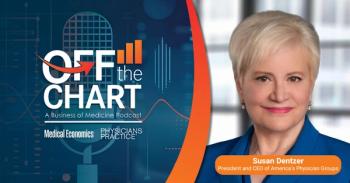
The Impact of Healthcare Reform on My Private Practice
As a physician in private practice, I am seeing the ingredients provided for the perfect storm and concerned about the direction of our healthcare system.
The healthcare reform law has been passed. The Supreme Court is now in the process of reviewing the arguments made for and against the law in order to determine whether or not the premise behind the legislation is going to be considered to be constitutionally correct. Even though the full impact of the law will not begin until 2014, there are several aspects of the law that have already impacted medical practices across the country.
Medicare reimbursement rates, which are closely tied to the sustainable growth rate (SGR) formula and linked to the funding behind healthcare reform, are stagnant at present. For those of us who treat senior citizens and other retired patients, we are required to provide effective and cost-efficient care to each beneficiary.
We are required to use an EHR so that disease states and compliance can be accurately tracked and reported to CMS. The number of patients that are going to be eligible for Medicare will increase at an almost exponential rate over the next 5years to 10 years. However, the reimbursements medical practices receive for providing this care has not been high enough to track the high rate of inflation across our country. Employees in medical practices require routine salary raises and provision of benefits, but the cost of providing such benefits to our employees is higher than that of the reimbursements we are presently receiving. Worse than that, we are faced with the routine end-of-year threats that our Medicare reimbursements are going to be significantly decreased in order to keep in step with the flawed SGR formula.
Insurance premiums and costs to patients are increasing at record rates. Patients who visit our practice are faced with ever-rising deductibles and copayments. Medications on their formularies are almost entirely restricted to generic medications. Most diagnostic imaging tests and procedures require prior authorization by the insurance company. The cost of providing the services to our patients is ever increasing. Once the patient leaves the office, our employees are faced with the task of getting approval for tests and procedures, calling the insurance company to beg for prior authorization of branded medications that are needed because the generic medications are not helpful. An average time for getting a medication authorized with the insurance company can exceed 30 minutes per medication. While the employee waits on the phone and goes through the never-ending number of choices with the automated systems, patient wait times increase and patient satisfaction decreases. Employees become irritated and they become more and more dissatisfied with their job.
As patients bear the burden of seeing their payment responsibility percentages increase, we are finding more patients with increasing balances in our accounts receivable. Taking into consideration the increasing prices of gasoline, food, and other incidentals, the average patient will choose to visit their doctor less often in order to minimize their financial responsibility. More patients will be calling the office for phone treatment, prescription refills, and other services just to avoid having to come to the office to pay their copay. A lower number of office visits translates into a lower bottom line for practices and thus sends medical practices into financial chaos.
As a physician who continues to practice in a private practice setting, I am seeing the ingredients provided for the perfect storm. I am concerned about the direction that our healthcare system is headed. Patients are feeling the services provided by physicians are of less quality as each year passes. Physicians are faced with spending less time with each patient in order to increase their number of office visits to compensate for the deficiencies in reimbursements. I do not know how much longer physicians can practice at this pace before the system comes crashing down.
What is the solution to the problems noted above? Physicians must be paid at a fair rate for the services they provide and we must be allowed to provide services that are reimbursable when the patient is not present in the office. I can only hope that as this year passes our healthcare system can begin to reimburse physicians fairly for the services provided so that our practices can be allowed to keep up with the pace of the current inflation rate.
Find out more about J. Scott Litton and our other
Newsletter
Optimize your practice with the Physicians Practice newsletter, offering management pearls, leadership tips, and business strategies tailored for practice administrators and physicians of any specialty.








